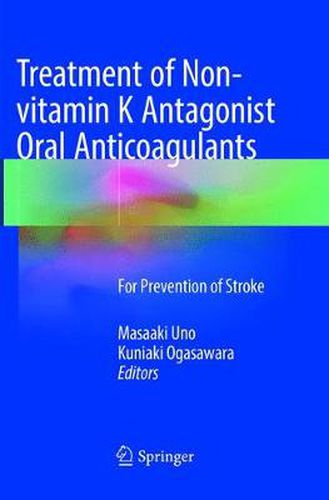Readings Newsletter
Become a Readings Member to make your shopping experience even easier.
Sign in or sign up for free!
You’re not far away from qualifying for FREE standard shipping within Australia
You’ve qualified for FREE standard shipping within Australia
The cart is loading…






This book describes new concepts and strategies for the clinical application of non-vitamin K antagonist oral anticoagulants (NOACs) for stroke. Although vitamin K antagonists have traditionally been used for the prevention of stroke, there are some problems associated with their use, such as the risk of intracranial hemorrhage, the need for dietary restrictions, and individual variability. Recently, NOACs have been introduced as alternatives to traditional anticoagulants and are becoming an option for treating stroke patients around the globe. However, their use is not without risk. Each chapter describes the successful use of NOACs for stroke patients and discusses their future impact from various points of view. The book is primarily written for neurosurgeons and neurologists but is also of interest to cardiologists involved in stroke treatment.
$9.00 standard shipping within Australia
FREE standard shipping within Australia for orders over $100.00
Express & International shipping calculated at checkout
This book describes new concepts and strategies for the clinical application of non-vitamin K antagonist oral anticoagulants (NOACs) for stroke. Although vitamin K antagonists have traditionally been used for the prevention of stroke, there are some problems associated with their use, such as the risk of intracranial hemorrhage, the need for dietary restrictions, and individual variability. Recently, NOACs have been introduced as alternatives to traditional anticoagulants and are becoming an option for treating stroke patients around the globe. However, their use is not without risk. Each chapter describes the successful use of NOACs for stroke patients and discusses their future impact from various points of view. The book is primarily written for neurosurgeons and neurologists but is also of interest to cardiologists involved in stroke treatment.